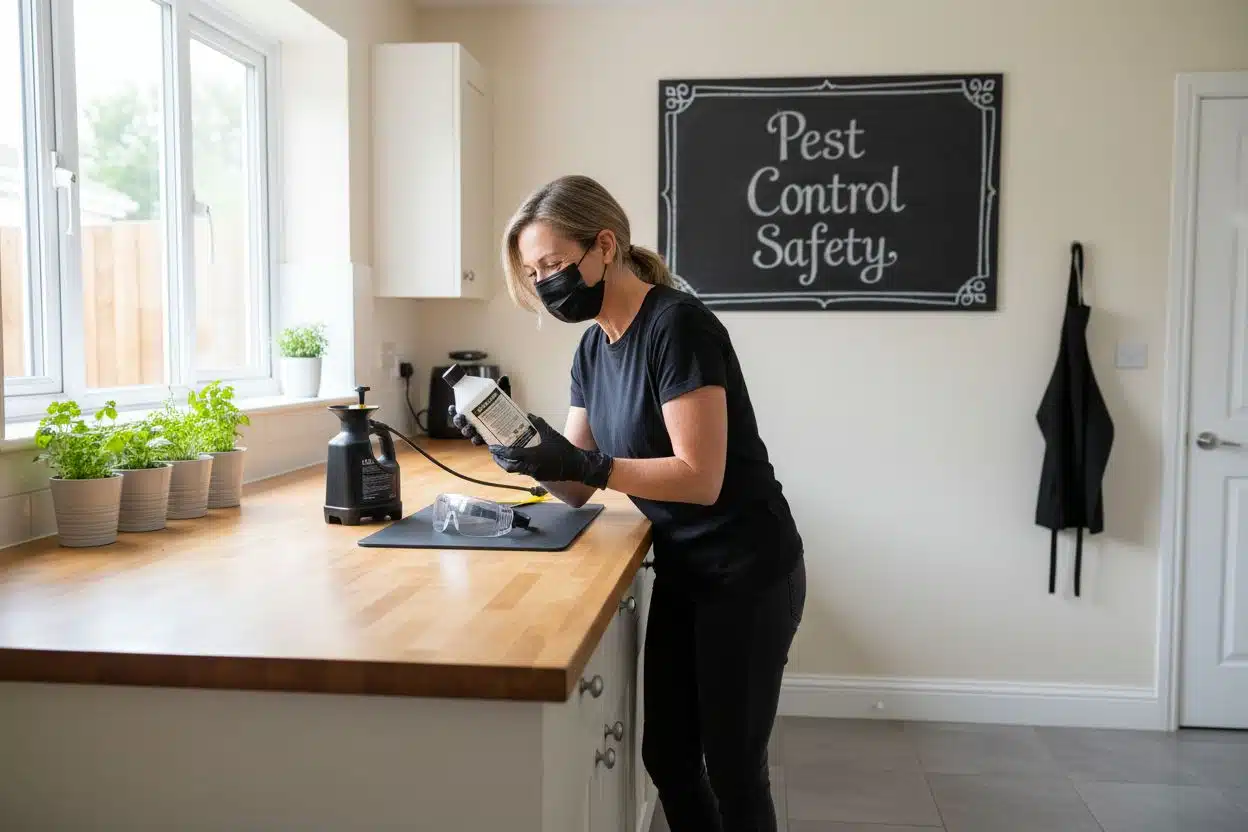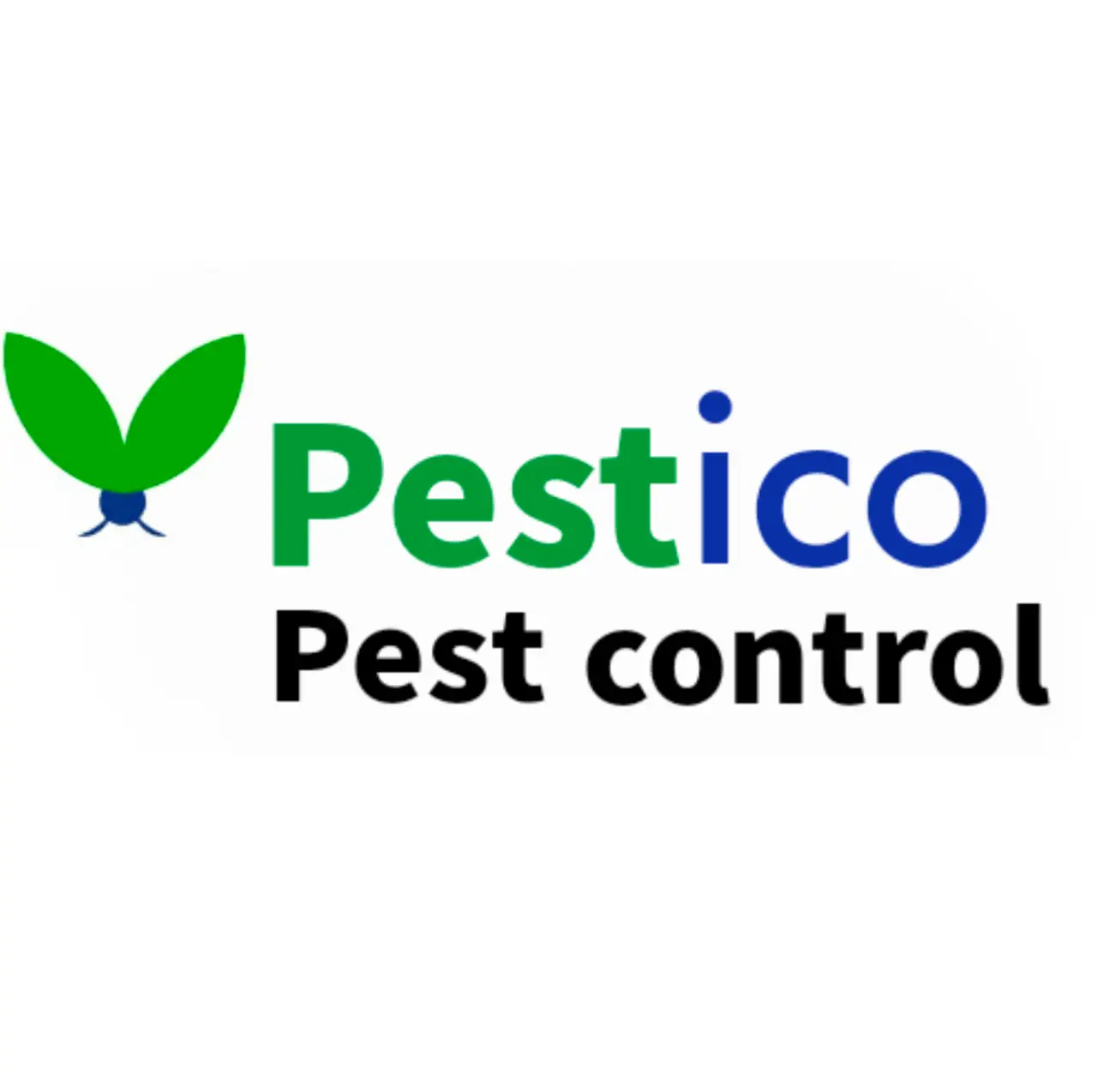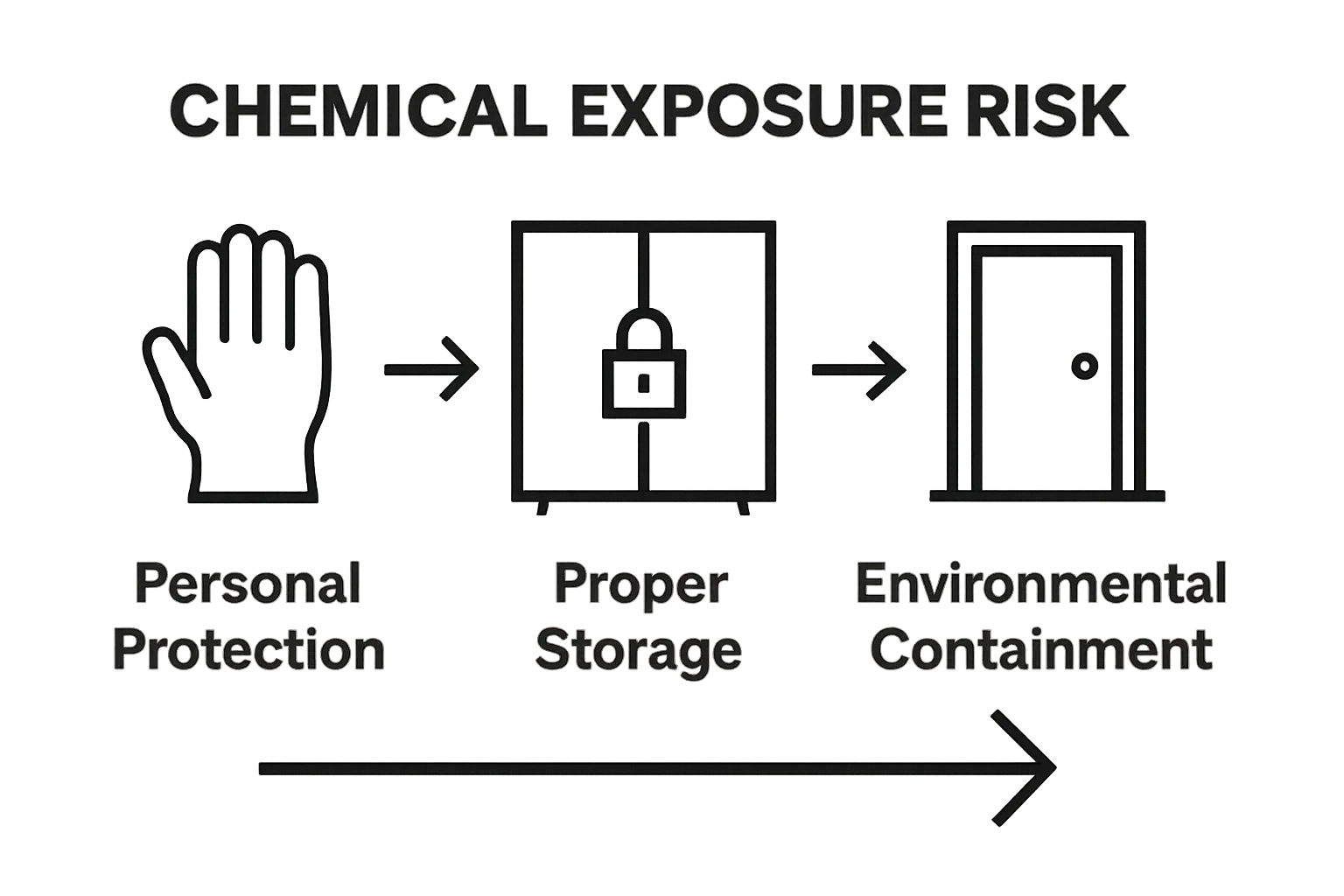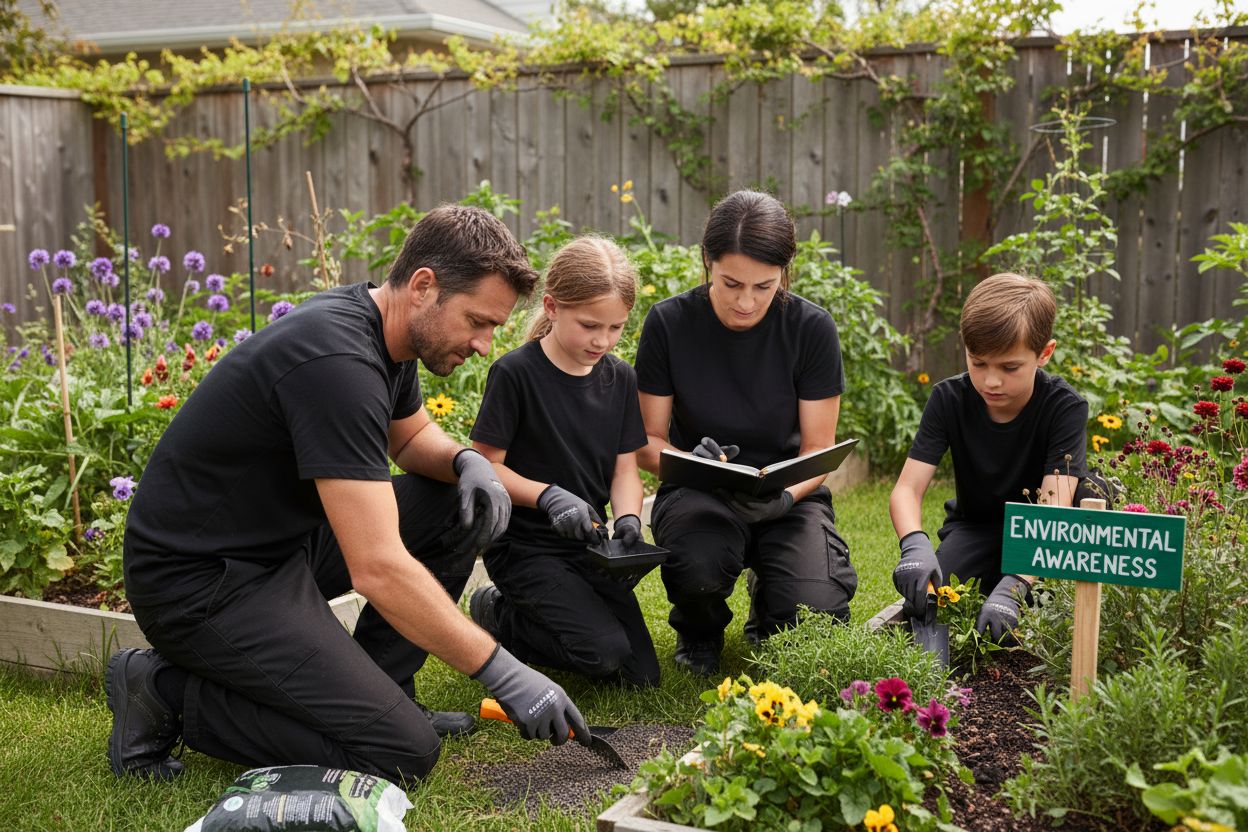Understanding DIY Pest Control Safety for Homeowners

Most people think protecting their home from pests is as simple as grabbing a spray and going to town. Yet about 1 in 7 pesticide injuries actually happen during DIY home treatments, putting families and pets at serious risk. The surprising part is that with the right safety steps, almost all of these accidents are completely avoidable.
Table of Contents
- What Is DIY Pest Control Safety?
- Why DIY Pest Control Safety Matters
- How DIY Pest Control Techniques Work
- Key Concepts In DIY Pest Control Safety
Quick Summary
| Takeaway | Explanation |
|---|---|
| Use protective equipment always. | Wear gloves, masks, and eye protection to reduce exposure to pest control chemicals. |
| Understand product hazards thoroughly. | Read labels and familiarize yourself with the pesticides to prevent health risks from misuse. |
| Consider environmental impact. | Evaluate how pest control methods may affect surrounding plants, animals, and water sources. |
| Follow proper application techniques. | Adhere to manufacturer instructions for effective and safe treatment application. |
| Maintain secure storage of chemicals. | Store pesticides in original containers and keep them away from children and pets. |
What is DIY Pest Control Safety?
DIY pest control safety represents a comprehensive approach homeowners use to manage pest problems independently while minimizing risks to personal health, property, and the environment. Our guide on pest control safety tips explains that understanding the fundamental principles of safe pest management is critical before attempting any home treatment.
Understanding the Core Principles
At its foundation, DIY pest control safety involves strategic planning, careful product selection, and precise application techniques that protect both humans and their living spaces. Homeowners must recognize that pest control is not just about eliminating unwanted insects or rodents, but doing so in a manner that prevents potential harm to themselves, their family, pets, and surrounding ecosystem.
Key Safety Considerations
Successful DIY pest control safety hinges on several critical elements:
Protective Equipment: Always wear appropriate personal protective gear including gloves, masks, and eye protection when handling pest control chemicals.
Product Knowledge: Thoroughly understand the specific pesticide or treatment you are using, including potential hazards and recommended application methods.
Environmental Awareness: Consider the impact of your pest control methods on surrounding plants, animals, and water sources.
According to research from the National Pest Management Association, improper DIY pest control can lead to significant health risks, including chemical exposure, accidental poisoning, and environmental contamination. Professional guidance suggests that homeowners should always read product labels carefully, follow manufacturer instructions precisely, and understand the potential consequences of misapplication.
By prioritizing safety, research, and careful execution, homeowners can effectively manage pest problems while protecting themselves and their environment from unintended negative consequences.
Why DIY Pest Control Safety Matters
Understanding the significance of DIY pest control safety transcends simple risk mitigation. It represents a critical approach to protecting your home, health, and environment from potential hazards associated with pest management. Discover the effectiveness of DIY pest control methods to make informed decisions about your pest management strategy.
Health and Environmental Risks
Pest control chemicals are powerful substances designed to eliminate unwanted organisms. However, without proper safety precautions, these same chemicals can pose substantial risks to human and animal health. Improper application can lead to direct exposure to toxic substances, potentially causing respiratory issues, skin irritations, neurological complications, and long-term health problems.
Financial and Property Protection
Beyond health concerns, DIY pest control safety directly impacts property value and maintenance costs. Incorrect application of pest control treatments can:
Damage structural materials and surfaces
Compromise the effectiveness of future professional pest management
Create environmental conditions that attract more pests
Potentially invalidate home insurance coverage related to pest damage
According to research from the Environmental Protection Agency, approximately 20% of home pest control accidents result from homeowners using products without understanding proper safety protocols. These incidents not only create immediate health risks but can also result in significant financial repercussions.
By prioritizing safety, homeowners transform pest control from a potentially dangerous activity into a responsible, strategic approach to maintaining a healthy living environment. Comprehensive safety measures protect not just the immediate household, but contribute to broader environmental and community well-being.
How DIY Pest Control Techniques Work
DIY pest control techniques represent a strategic approach to managing pest populations using targeted methods and specialized products designed for home application. Understanding effective pest control strategies can help homeowners make informed decisions about managing unwanted insects and rodents.
Chemical and Natural Treatment Methods
Pest control techniques fundamentally operate through two primary approaches: chemical interventions and natural deterrent strategies. Chemical methods utilize synthetic compounds that disrupt pest metabolic processes, neurological systems, or create environmental barriers that prevent reproduction and survival. Natural techniques, conversely, leverage ecological principles to discourage pest presence without introducing potentially harmful synthetic substances.
Targeted Intervention Strategies
Effective DIY pest control requires understanding specific pest behaviors and selecting appropriate intervention techniques. These strategies typically involve:
Barrier Protection: Creating physical and chemical boundaries that prevent pest entry
Habitat Modification: Removing environmental conditions that attract and sustain pest populations
Direct Elimination: Using targeted treatments to reduce existing pest populations
According to research from the National Pest Management Association, successful pest management depends on comprehensive understanding of pest biology, behavioral patterns, and precise application techniques. Homeowners must recognize that different pests require unique intervention strategies based on species, habitat, and reproductive characteristics.
By integrating scientific principles with practical application, DIY pest control techniques transform reactive pest management into a proactive, strategic approach to maintaining a healthy home environment. Understanding the underlying mechanisms of these techniques empowers homeowners to make informed, effective decisions about pest control.
To clarify the differences between chemical and natural DIY pest control methods described in the article, the following table compares their key features and risks.
| Method | Main Approach | Typical Products | Key Risks |
|---|---|---|---|
| Chemical | Uses synthetic compounds to disrupt pests | Sprays, granules, baits | Chemical exposure, environmental contamination |
| Natural | Leverages ecological deterrents and barriers | Essential oils, traps | Lower toxicity, may be less effective for severe infestations |
Key Concepts in DIY Pest Control Safety
DIY pest control safety requires a comprehensive understanding of core principles that protect homeowners from potential risks. Learn about pest control safety for Texas homeowners to develop a strategic approach to managing pest problems effectively and responsibly.
Chemical Interaction and Exposure Risks
Understanding chemical interactions is fundamental to DIY pest control safety. Pesticides contain complex chemical compounds designed to target specific biological systems in pests. However, these same compounds can potentially interact with human biological systems, creating significant health risks if not handled with extreme caution. Exposure can occur through multiple pathways, including dermal absorption, inhalation, and accidental ingestion.
Risk Mitigation Strategies
Effective DIY pest control safety involves implementing comprehensive risk mitigation strategies that address potential hazards comprehensively. These strategies focus on preventing unintended exposure and minimizing potential negative consequences:
Personal Protection: Utilizing appropriate protective equipment including chemical-resistant gloves, respiratory masks, and protective eyewear
Environmental Containment: Ensuring treatment areas are properly sealed and isolated to prevent chemical spread
Proper Storage: Maintaining pest control chemicals in original containers, securely locked away from children and pets
According to research from the Centers for Disease Control and Prevention, approximately 1 in 7 pesticide-related injuries occur during home application, highlighting the critical importance of understanding safety protocols. Professional guidelines emphasize the need for careful product selection, precise application techniques, and thorough understanding of potential interaction risks.
This table summarizes the various routes of chemical exposure and mitigation strategies homeowners should understand to minimize risks when handling pest control treatments.
| Exposure Pathway | Risk Example | Recommended Mitigation |
|---|---|---|
| Dermal (Skin Contact) | Chemical spills on hands or arms | Wear gloves, long sleeves |
| Inhalation | Breathing in fumes during application | Use masks, ventilate area |
| Accidental Ingestion | Eating after product handling, contamination | Wash hands, proper storage |
By integrating scientific knowledge with practical safety measures, homeowners can transform pest control from a potentially dangerous activity into a controlled, responsible intervention that protects both human health and home environments.
Take the Guesswork Out of DIY Pest Control Safety
Are you worried about the risks and hidden hazards that come with using DIY pest control solutions in your home? Many homeowners feel uncertain about handling chemicals and protecting their families while trying to manage pests. From concerns about accidental exposure to challenges around selecting the right products and techniques, navigating pest control safety can feel overwhelming. Your health, your property, and your peace of mind deserve more than uncertainty.
Make a safer choice now. At Pestico, our family business specializes in protecting homes across Texas with affordable, expert Pest, Termite, Mosquitoes, and Rodent Control services you can trust. We invite you to learn more about essential pest control safety tips and discover why relying on our professional guidance can help you avoid common DIY mistakes. Visit Pestico.biz today and let our team take care of your pest concerns quickly and safely. Take the first step to a worry-free home environment.
Frequently Asked Questions
What are the key safety considerations for DIY pest control?
Successful DIY pest control safety hinges on protective equipment, product knowledge, and environmental awareness. Always wear appropriate gear, understand the pest control products you use, and consider their impact on surrounding ecosystems.
How can homeowners mitigate risks when using pest control chemicals?
To mitigate risks, homeowners should utilize personal protective equipment, ensure proper storage of chemicals, and contain treatment areas to prevent chemical spread. Reading product labels and following all manufacturer guidelines is also essential.
What are the main methods used in DIY pest control?
DIY pest control techniques typically utilize chemical methods that disrupt pest systems and natural deterrent strategies that encourage pest avoidance without harmful substances. Understanding specific pest behaviors helps in selecting effective methods.
What health risks are associated with improper DIY pest control?
Improper DIY pest control can lead to health risks such as chemical exposure, respiratory issues, skin irritations, and potential long-term complications. Ensuring proper application and safety measures is crucial to avoid these issues.
Recommended
- Top Pest Control Safety Tips For Texas Homeowners In 2025 – Pest Control Van Alstyne, TX – Pestico Pest Control
- Is DIY Pest Control Effective? 7 Shocking Cost Comparisons
- Are Pest Control Safe? What TX Homeowners & Businesses Need To Know In 2025 – Pest Control Van Alstyne, TX – Pestico Pest Control
- Is DIY Pest Control Effective? 7 Shocking Cost Comparisons
- DIY HVAC Maintenance Checklist 2025 for Louisville and Southern Indiana – HVAC Service and Repair | Louisville, KY | Project Heating & Cooling
- Safe Cleaning Practices Every McKinney Home Needs



